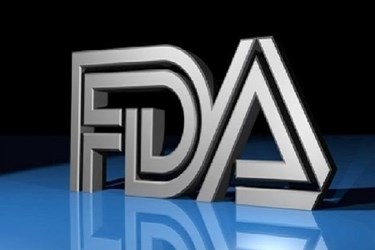FDA Issues Draft Guidance For Codevelopment Of IVD And Therapeutic Products
By Jof Enriquez,
Follow me on Twitter @jofenriq

For device manufacturers who want to obtain contemporaneous marketing authorization for a therapeutic product and its corresponding IVD companion diagnostic, the U.S. Food and Drug Administration (FDA) has released draft guidance to help them meet regulatory requirements and plan clinical trials.
Since the pairing and approval in 1998 of the therapeutic product trastuzumab (Herceptin) and the immunohistochemical IVD companion diagnostic (HercepTest), which measures expression levels of human epidermal growth factor receptor 2 (HER-2) in breast cancer tissue, there have been numerous therapeutics developed alongside an accompanying diagnostic.
According to RAPS Focus, more than 20 percent of new drugs and biologics approved in 2014 included an accompanying diagnostic test; this increased to 28 percent in 2015. Moving forward, about one-quarter of all new drug approvals will include the approval of an IVD companion diagnostic, said Amy Miller, PhD, executive VP of the Personalized Medicine Coalition, to Focus.
Entitled Principles for Codevelopment of an In Vitro Companion Diagnostic Device with a Therapeutic Product, the draft guidance contains basic principles to assist sponsors in codevelopment of therapeutics and IVDs. It also specifies regulatory requirements, considerations for planning and executing clinical trials of therapeutic products (including investigation of the paired IVD companion diagnostic), and administrative considerations in submitting applications for such products.
"Codevelopment of IVD companion diagnostics and therapeutic products is critical to the advancement of precision medicine. FDA seeks to facilitate innovations in precision medicine by providing sponsors with a set of principles that may be helpful for effective codevelopment and in fulfilling FDA’s applicable regulatory requirements. This guidance outlines fundamental principles that have been developed to assist sponsors in codevelopment," FDA stated.
Although FDA has been evaluating companion diagnostics and other personalized medicine technologies for over a decade, significant new guidance has been issued in the past two years, wrote Janice Hogan and Shilpa Prem of Hogan Lovells in a recent MDO guest column. This includes the final guidance for In Vitro Diagnostics released in August 2014, which recommended contemporaneous development of companion diagnostics and therapeutic products.
FDA elucidates this approach further in the newly released final guidance, recommending specific steps for sponsors of both the therapeutic product and the IVD, including direction to "meet with the appropriate FDA review centers prior to launching a trial intended to advance the development of the therapeutic product and the IVD companion diagnostic," in order to obtain expedient contemporaneous marketing authorizations.
Having to deal with two centers at FDA: the Center for Drug Evaluation and Research (CDER) and the Center for Diagnostic and Radiological Health (CDRH), remains a significant challenge for sponsors, something the final guidance seeks to address.
"Although codevelopment as a process does not require simultaneous development of the IVD companion diagnostic and the therapeutic product from beginning to end, the availability of an IVD with “market-ready” analytical performance characteristics (i.e., a test that is completely specified with complete analytical validation and meets the therapeutic product sponsor’s expectations for performance) is highly recommended at the time of initiation of clinical trial(s) intended to support approval of the therapeutic product," stated FDA.
FDA is accepting comments and suggestions regarding this draft document within 90 days.
An earlier FDA report defined the agency's key role in the emerging era of personalized medicine, which involves "the use of two medical products – typically, a diagnostic device and a therapeutic product – to improve patient outcomes." FDA has attributed the rise of this field, in part, to improvements in medical devices, which it said have created "the possibility for scientists to develop tools to truly personalize diagnosis and treatment."
FDA has been earmarked $10 million in funding to regulate novel drugs and devices under the initial phase of President Barack Obama's Precision Medicine Initiative.
